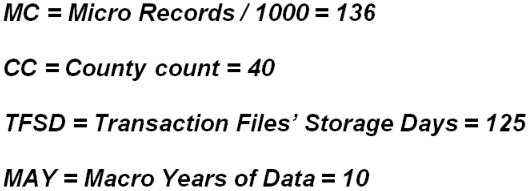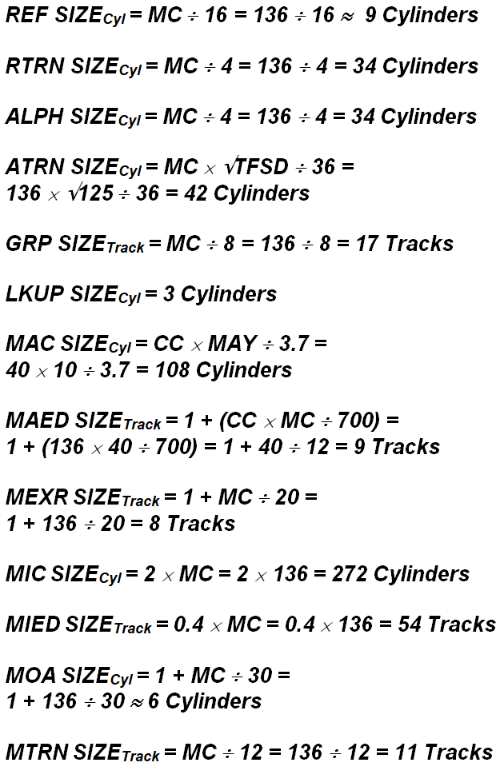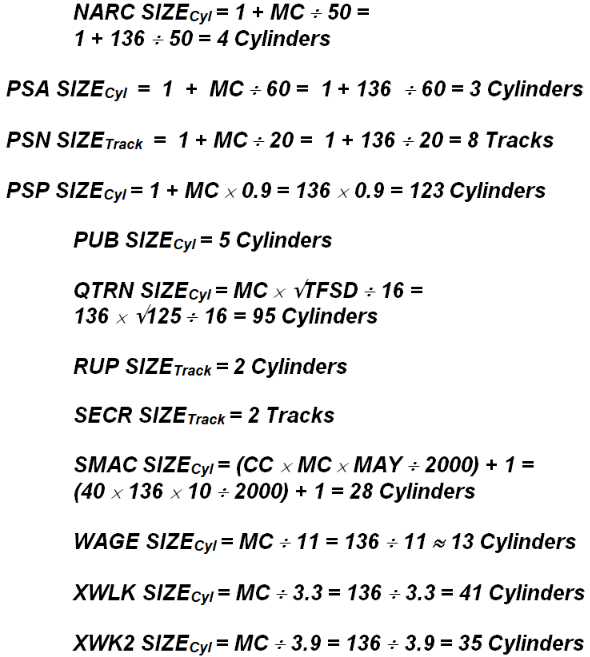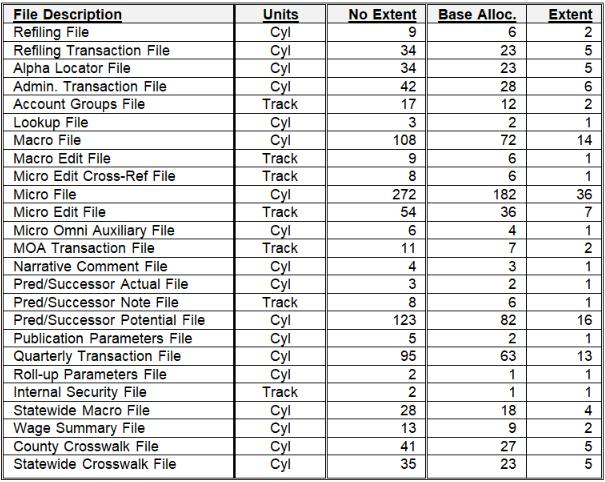09 sample state computations
Sample State Computations
To demonstrate how these equations can be put into effect by a State, the following example will establish the values for the nonexistent state of “Ohiowa” (with a postal abbreviation of “OA”). We’ll say that this State has 136,000 establishments (which will be divided by 1000 to produce the “MC” value), and 40 counties (to be loaded into the “CC” field). They will use all files, including the optional Wage Summary File. In addition, this State will build up the Macro File to store up to 10 years of data. The two Transaction Files will be allowed to build for the standard six months (125 business days), before the older data are purged from the file. This provides the necessary variables of-
From these values, the equations shown below can be established for VSAM File size allocations:
Thus the total size of the files used by the imaginary State of Ohiowa for the EXPO and EARS system would be about 865 cylinders, or about 13,000 tracks. This is equivalent to just over 625 megabytes of disk storage space.
Using the Base Allocation and Extent Size computations, for States desiring to decrease total file space usage by assigning extents when they are needed, a different set of allocation values can be determined, as demonstrated in the table that appears below. In this table, “No Extent” refers to the values just computed, “Base Alloc.” is the base allocation value derived from the first equations behind the Base Allocation hyperlink provided. “Extent” indicates the size of supple-mental file extents, in the same units as the base allocation. Note that for fixed-size files, it is not necessary for extent allocations to be used.
Note: The Macro, Statewide Macro, County-based, and Statewide-based Crosswalk Files will be shrunk substantially when SIC-based data are removed completely. Only NAICS-based aggregates are currently being prepared, but historical data still retains SIC-based totals.
Related Links



